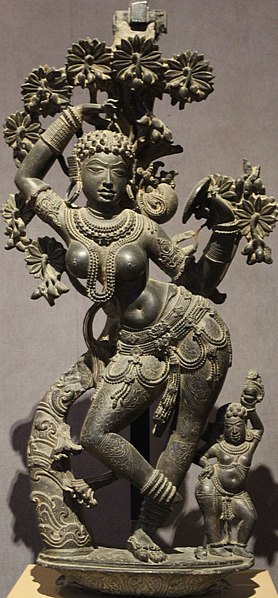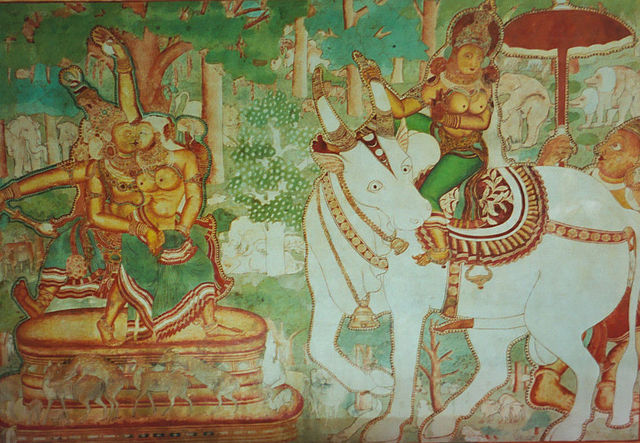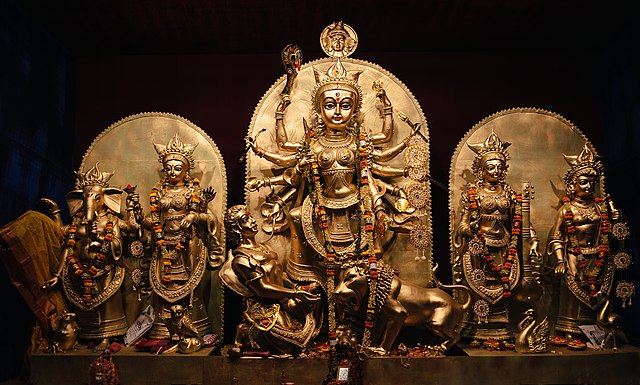Mohini is the Hindu goddess of enchantment. She is the only female avatar of the Hindu god Vishnu. She is portrayed as a femme fatale, an enchantress, who maddens lovers and demons, sometimes leading them to their doom. Mohini is introduced into Hinduism in the narrative epic of the Mahabharata. Here, she appears as a form of Vishnu following the Churning of the Ocean, a mesmerising beauty who distributes the amrita to the weakened devas (gods) and depriving it to the dominant asuras (demons), allowing the former to defeat the latter with their newfound immortality.
Sculpture of Mohini
Mohini distributing the Amrita to the Devas (left), while the Asuras look on
Bhasmasura-Mohini by Raja Ravi Varma. Bhasmasura (left) is about to place his hand on his head following the dancing Mohini (centre), as Shiva (right) looks from behind the tree.
A Mattancherry palace mural shows Shiva and Mohini in an embrace while Parvati seated on Nandi, the white bull, looks at them in distaste.
Hindu deities are the gods and goddesses in Hinduism. Deities in Hinduism are as diverse as its traditions, and a Hindu can choose to be polytheistic, pantheistic, monotheistic, monistic, even agnostic, atheistic, or humanist. The terms and epithets for deities within the diverse traditions of Hinduism vary, and include Deva, Devi, Ishvara, Ishvari, Bhagavān and Bhagavati.
Goddess Durga and a pantheon of other gods and goddesses being worshipped during Durga Puja Festival in Kolkata.
Six Hinduism deities. Surya, Parvati, Hanuman, Lakshmi, Vishnu, and Indra. All of these statues came from India, except Vishnu (from the Thai-Cambodian border). Various eras. National Museum of Scotland, Edinburgh
Shiva (left), Vishnu (middle), and Brahma (right)
The ten avatars of Vishnu, (Clockwise, from top left) Matsya, Kurma, Varaha, Vamana, Krishna, Kalki, Buddha, Parshurama, Rama and Narasimha, (in centre) Radha and Krishna. Painting currently in Victoria and Albert Museum.







